With help from School Specialty, a STEM-focused elementary school in Dallas has furnished and equipped its instructional spaces to support collaborative, hands-on learning and exploration that will position students for success on whatever path they ultimately take.
The design of the school and its choice of furnishings gives students the vibe of: “We’re here to work—and we’re going to get our hands messy,” says Principal Gina Maffucci. Biomedical Preparatory at UT Southwestern is a “transformation school” developed by the Dallas Independent School District in partnership with the University of Texas Southwestern Medical Center.
The school opened in 2022 with students in prekindergarten through first grade. As those students have advanced through their education, Biomedical Preparatory has added another grade level each year and will continue to do so until it serves students through the eighth grade.
With the start of the 2025-26 school year, Biomedical Preparatory has completed the final phase of renovations to its building. Not only does the school now have space to accommodate up to 600 students in grades preK-8—but its furniture and décor “reflect the model we have for learning,” Maffucci says—and School Specialty has played a key role in the process.
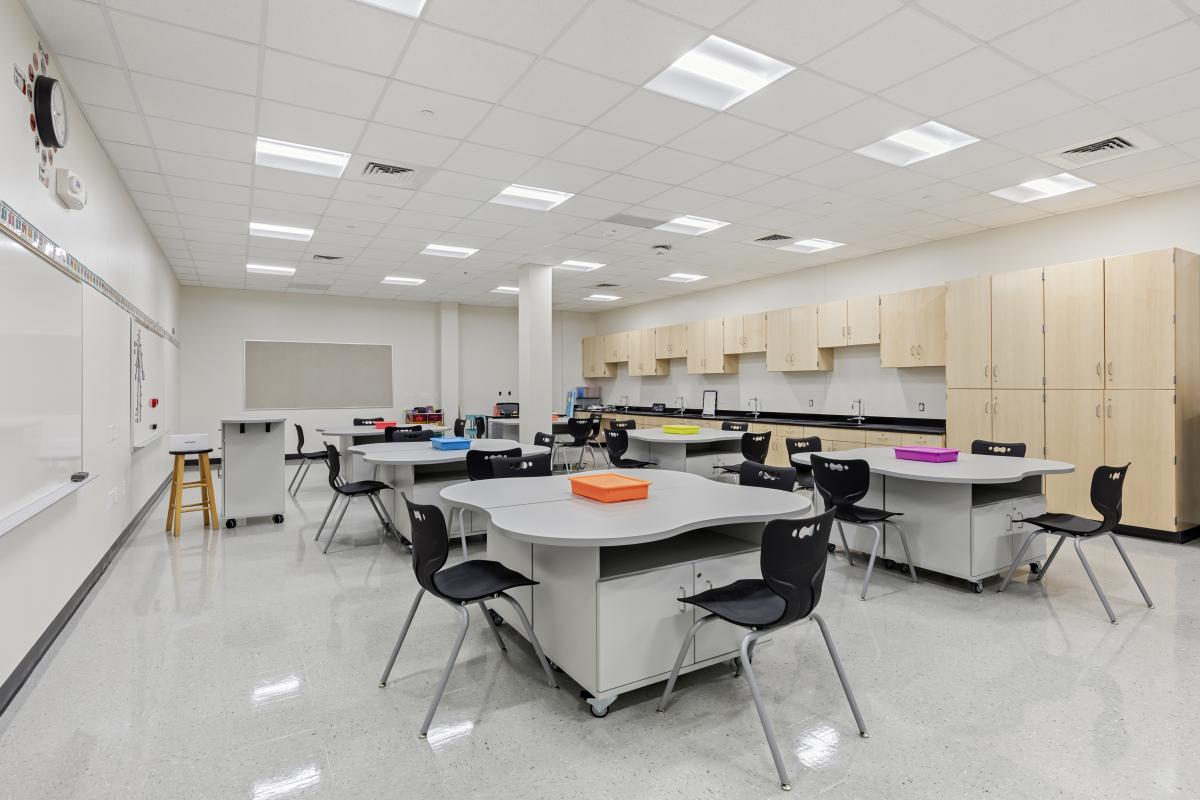
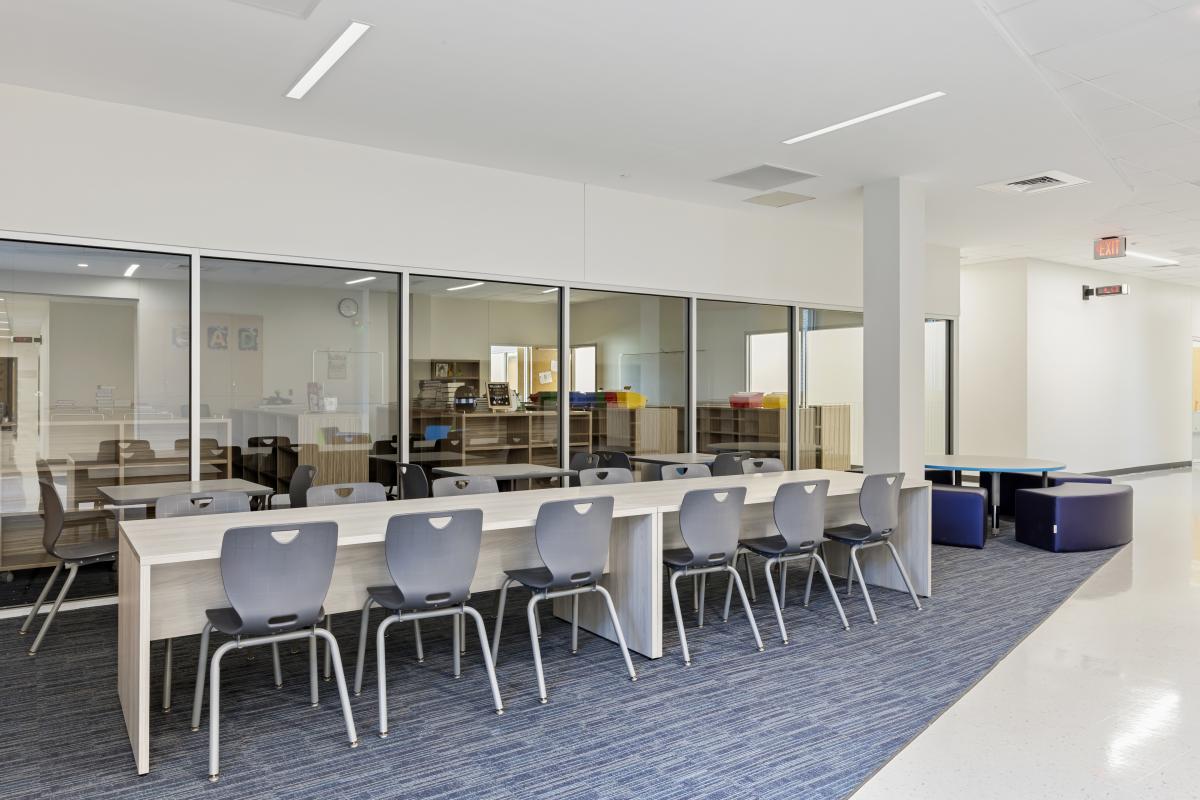
An Innovative Instructional Model
As its name implies, Biomedical Preparatory gives students a well-rounded primary education, but with a special focus on the biomedical sciences. As a transformation school, it is open to all families in the Dallas ISD via a lottery system.
“Our students are gaining exposure to biomedical sciences in multiple ways,” Maffucci says. As part of their science block, teachers are leading age-appropriate biomedical units for students based on a specific scope and sequence. For example, pre-kindergarteners and kindergarteners are learning about their bodies and the various systems that allow their bodies to function. As they get older, they gain a more sophisticated understanding of these systems and how they work.
The school also holds what it calls Science Fridays. During these events, various biomedical professionals visit with students and work with them in hands-on ways. An anesthesiologist might come in to talk about pain management and how they help people feel comfortable during surgery, or a pulmonologist might have kids create a model of their lungs out of Play-Doh.
“Our students are experiencing real-world career days on a regular basis,” Maffucci notes.
The school’s instructional model is based on six central “bio-values”: curiosity, empathy, creativity, innovation, leadership, and resilience. “These are values that will set up students for success in any field,” she observes, “but especially the biosciences.”
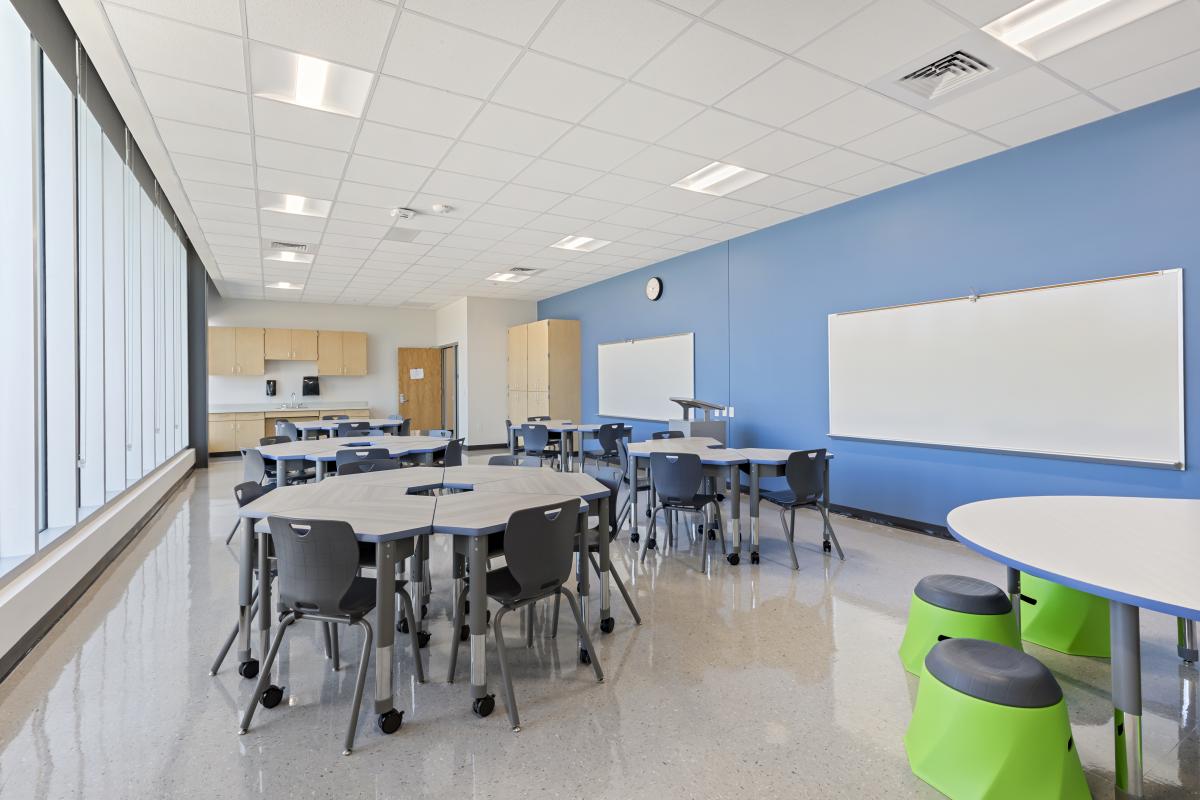
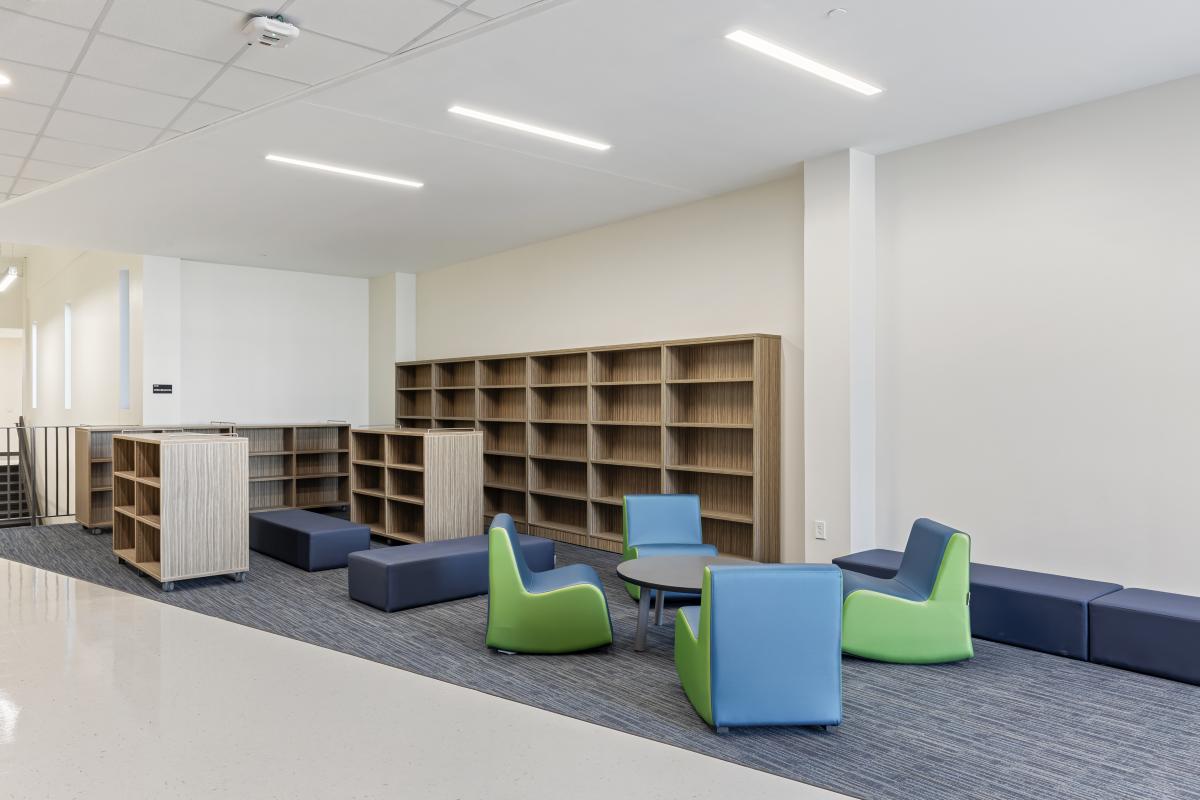
How the Furniture Supports This Model
The school’s instructional approach involves a lot of collaborative and hands-on learning, and the design of its instructional spaces perfectly supports this approach.
“Our learning spaces lend themselves to creativity and exploration,” Maffucci says.
For instance, a makerspace area is furnished with Childcraft mobile STEAM tables that include built-in shelving to hold supplies, as well as dry-erase whiteboard surfaces for students to write on as they work through their designs. Classrooms are outfitted with Classroom Select desks and chairs that can easily be arranged in many configurations to support different group sizes. An open reading area includes soft seating options for students to relax in as they read or work either independently or in groups.
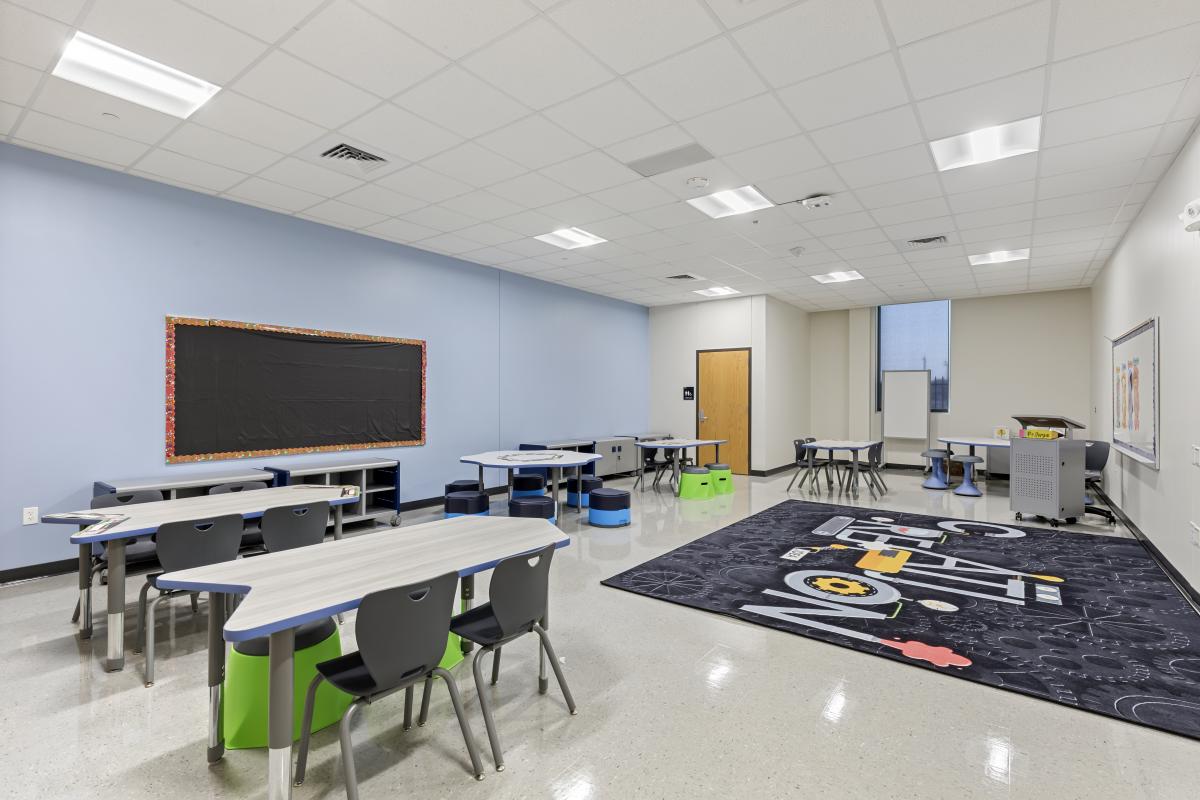
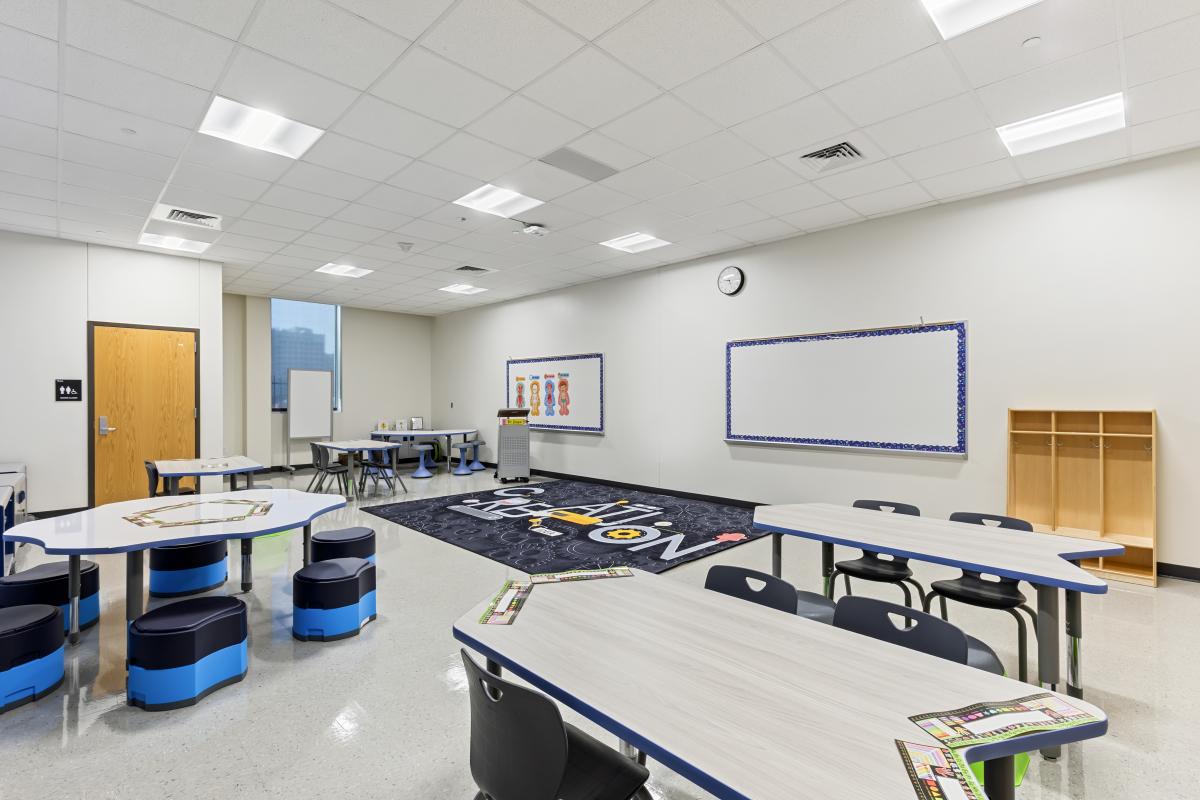
The classrooms also feature various seating styles, such as traditional chairs, NeoRok fidget stools, and NeoStak stools. “This flexible seating gives students different options for how to engage with lessons,” Maffucci says, “so they can seek what they need” in order to focus and excel.
Having modern, comfortable, and flexible furnishings allows students to “find their place” where they feel most at ease to engage in learning—and it empowers teachers to use many different instructional strategies to reach students.
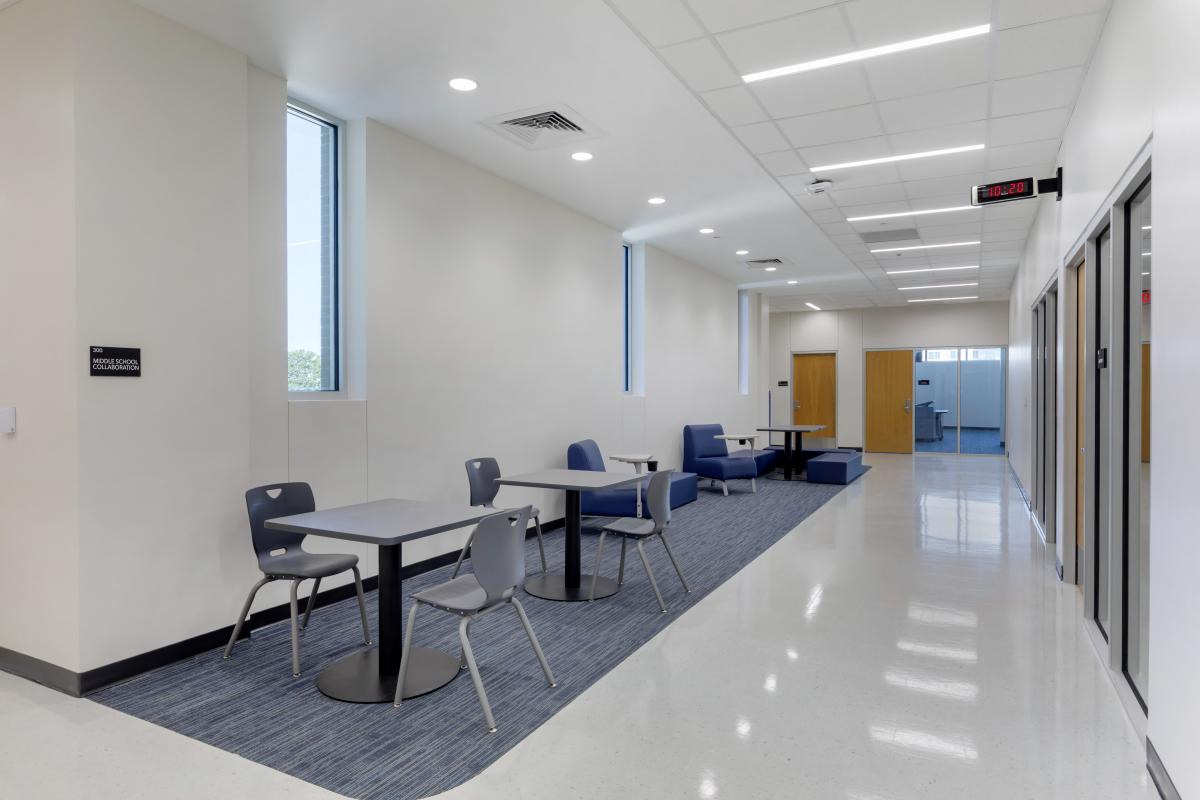
“Our teachers are so excited,” Maffucci says. The completed building “gives them the space to be creative. And our community is so excited as well. They’re in awe of the space and how it came together. We now have a state-of-the-art school that was worth the wait.”
Throughout the process, School Specialty worked with Maffucci and her colleagues to suggest furnishings that would effectively support the school’s vision for instruction.
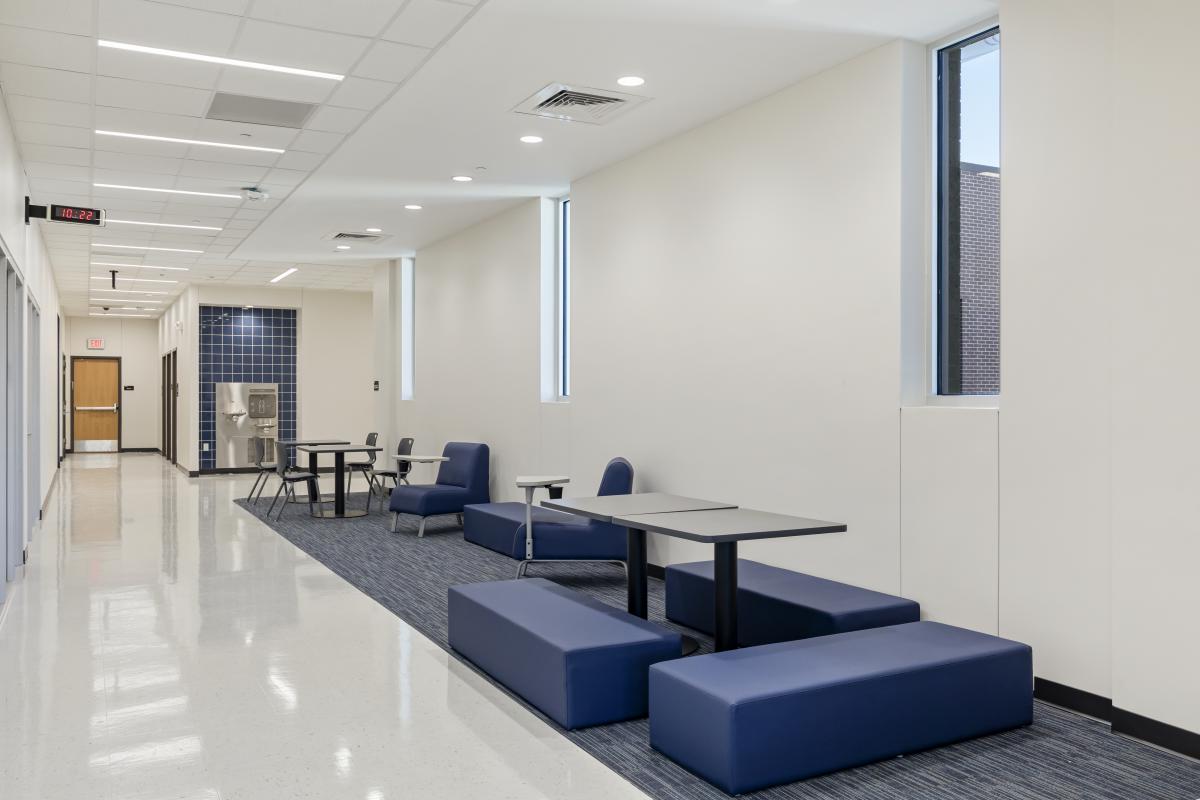
“School Specialty has been so great to work with,” Maffucci concludes. “They were always so willing to assist us through each phase of the building project. I really value our partnership.”
Explore Creating a STEM-Supportive School in Your District
A properly-equipped school can support collaborative, hands-on learning and student exploration of STEM topics. This helps set students up to develop a lifelong love of learning and to experience future academic success. Learn more about how School Specialty can help your school develop a STEM supportive environment by calling (800) 305-0174, emailing projectsbydesign@schoolspecialty.com, or going to www.schoolspecialty.com/projects-by-design.